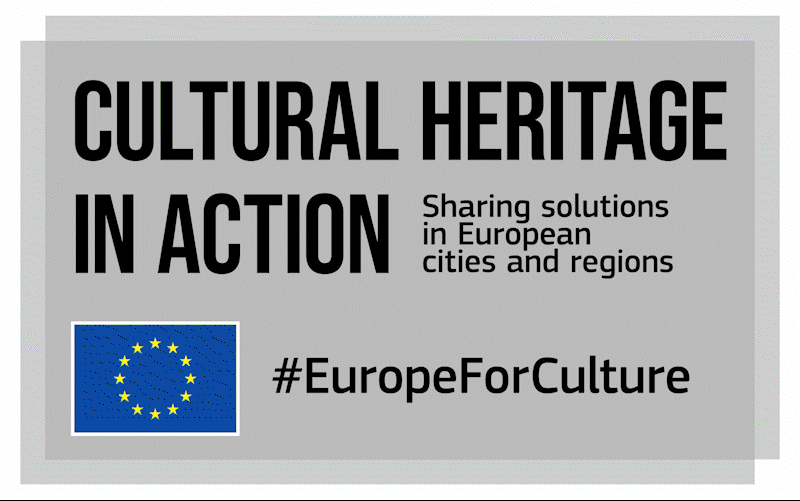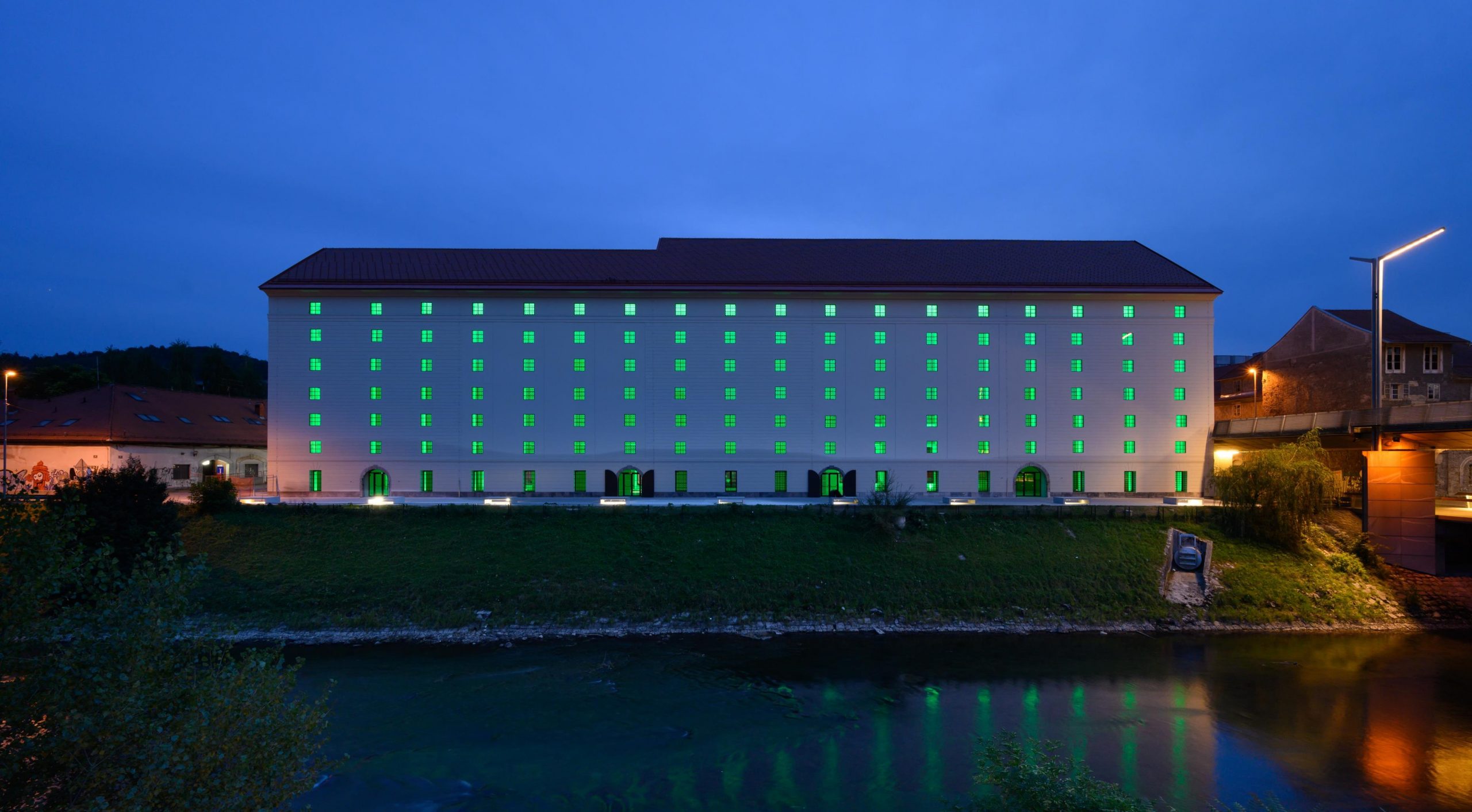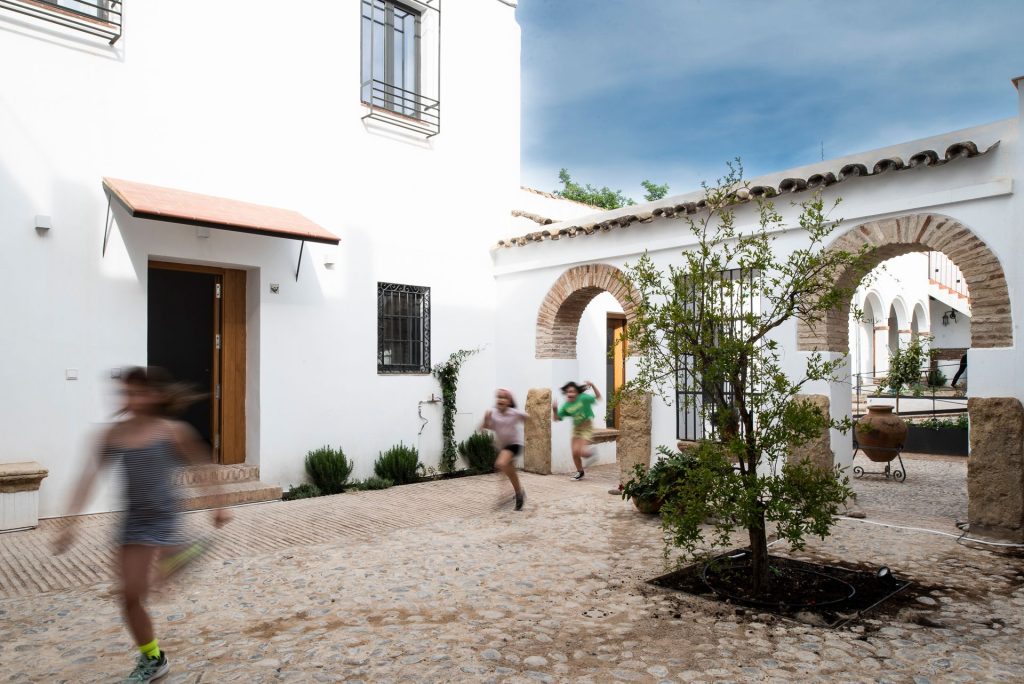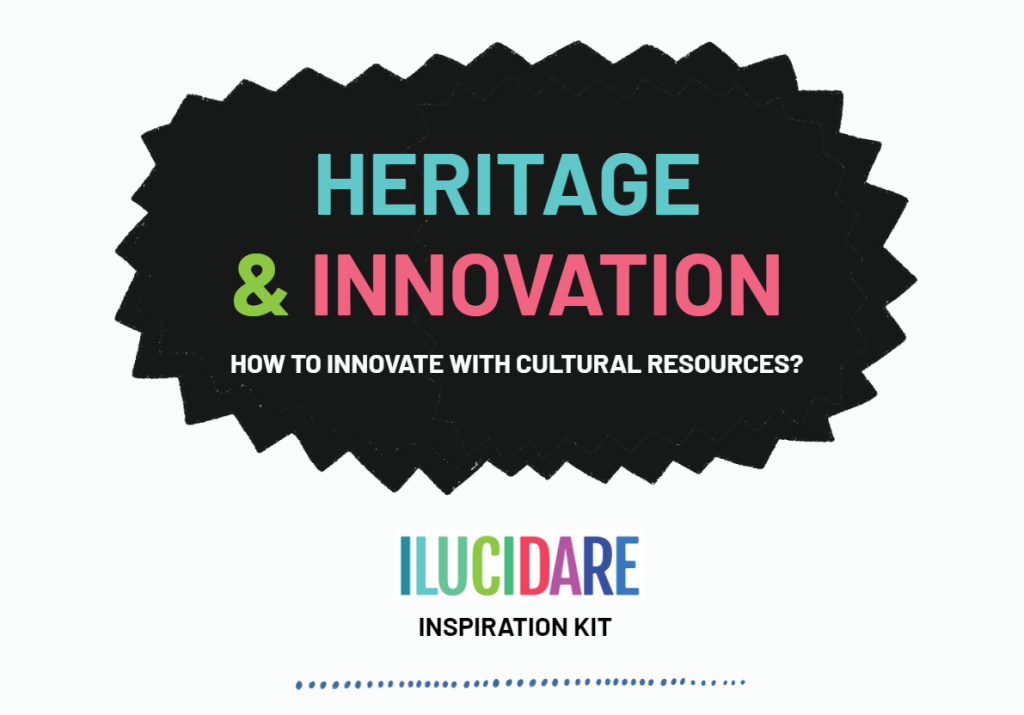Europe’s built environment is rich and diverse, encompassing spiritual, cultural, social, and economic elements. However, as a result of changes in society and economy, many heritage sites have been abandoned or underused- such is the case of industrial heritage. These buildings reflect the features of the era in which they were built. Thus, the demolition of these structures cut the link between the past and the present.
Adaptive re-use offers itself as a strategy to preserve the values of these structures, while at the same time adapting the place for new uses of our time and as a catalyst of local development. Through smart renovation and transformation, heritage sites can find new, mixed or extended uses. As a result, their social, environmental and economic value is increased, while their cultural significance is enhanced.
The second sharing stories webinar of Cultural Heritage in Action explored, through concrete examples, the benefits of re-using heritage sites; the challenges inherent to adaptive re-use projects; the drivers of quality interventions on cultural heritage as well as the larger contribution of re-use of cultural heritage to current EU policy initiatives.
Adaptive reuse has many benefits: social, economic, and cultural, as underlined by Selma Harrington, Board Member of the Architects Council Europe. Referring to the 2018 Leeuwarden Declaration, she emphasized the need for flexible approaches, involving citizens, interdisciplinary work, financial sustainability, and good storytelling through digital technologies for smart and quality-based processes of adaptive reuse.
‘[Adaptive reuse] generates new social dynamics in the city and gives the possibility to engage citizens in the decision-making processes, it saves construction materials and urban spaces, contributing to make cities more sustainable. It also leads to economic growth, creates jobs, and strengthens the ties of citizens with the local history.’’ Selma Harrington
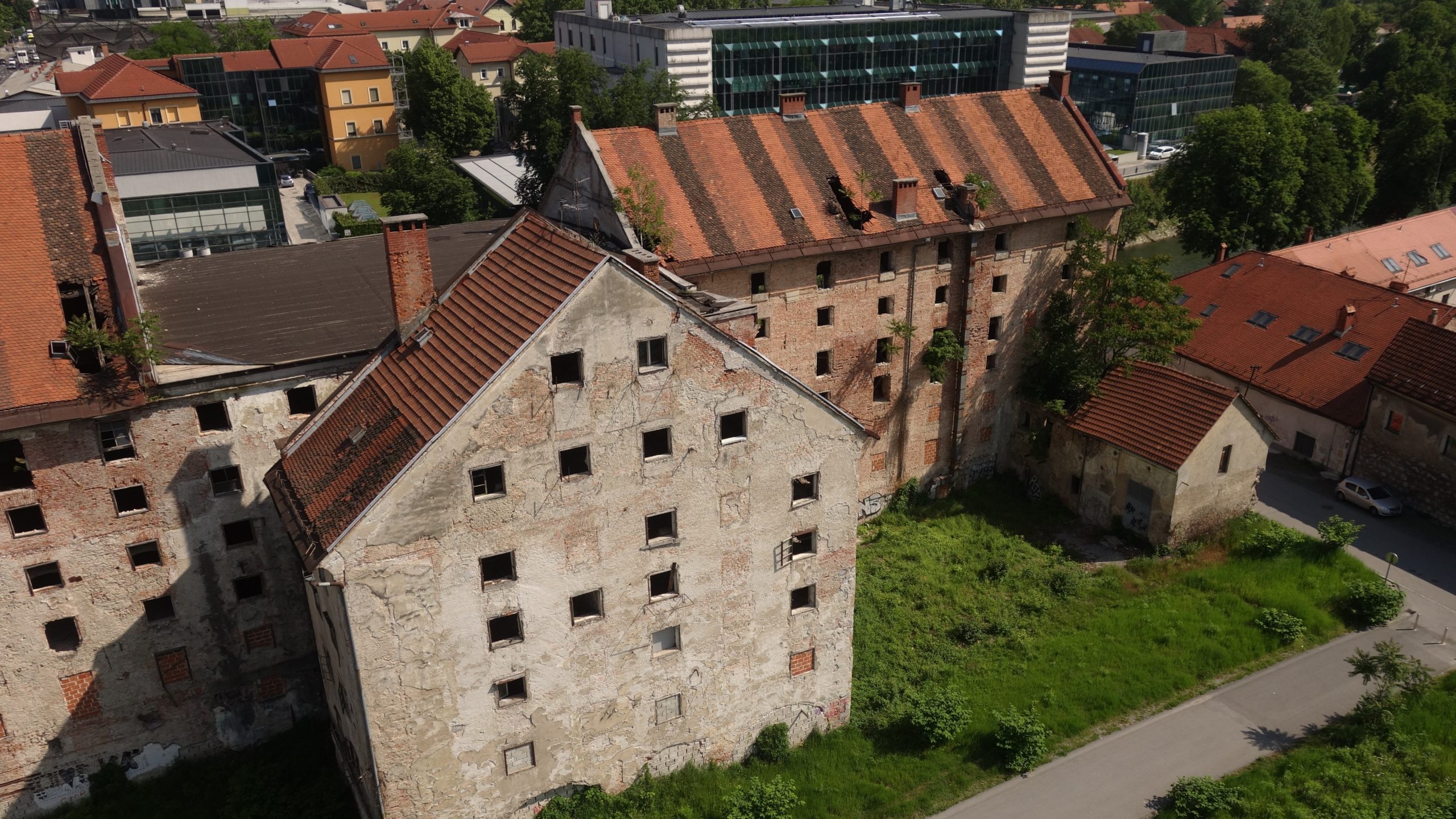
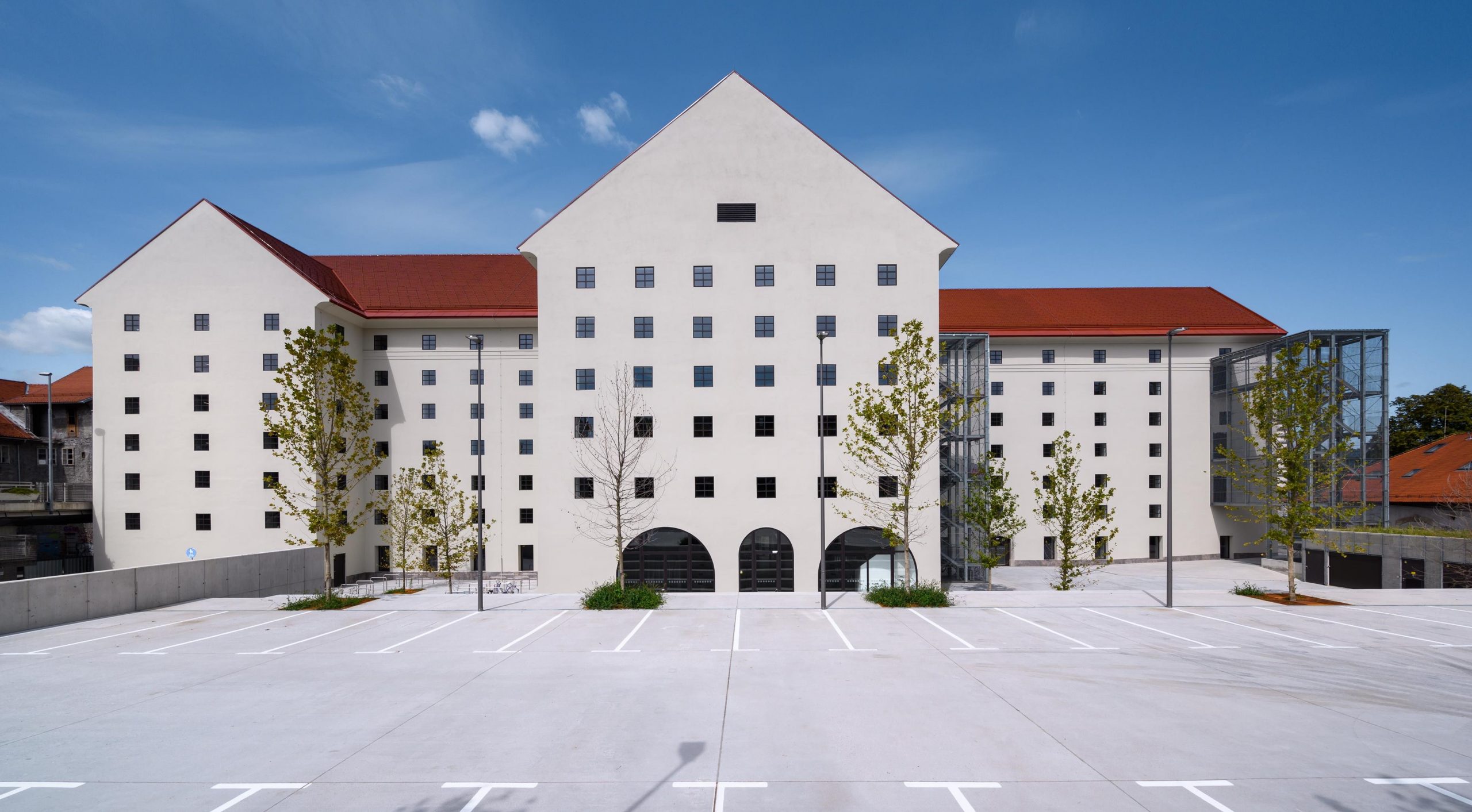
Presented during the webinar, inspirational examples from Ljubljana, Brno, and Valladolid illustrate how adaptive reuse works in practice:
The Cukrarna’s Gallery in Ljubljana is a former sugar refinery from the 19th century which was transformed into a vibrant cultural hub. Blaž Peršin, Director of Museums and Galleries of Ljubljana, detailed some of the solutions implemented to overcome preservation challenges, namely preserving the authenticity and reinforcement of the structure. According to him, there is a high need to work with a multidisciplinary team – from artists to architects and urban planners.
In Brno, the Kumst Creative Hub is a building dating back to the 1930s, which functioned as the Faculty of Fine Arts and has now been converted into a hub for creative professionals. Indeed, a local “Creative Industries Mapping Research”, carried out in 2014, revealed the need for a center of this kind. The rehabilitation process has therefore been conducted in a bottom-up manner, as recalled by Zdeňka Hubáček Kujová, Director of Kumst. The building now functions as a space where creative professionals connect with people from different sectors and expand their networks, as well as a learning space where they gain and share insights on their creative professions.
Tomas Kozelsky, Founding Partner of KOGAA Architectural Studio who participated in the rehabilitation of the building, recalled key topics to consider in adaptive reuse projects, namely evaluating convertibility, keeping architectural and historical values of the building and design flexibility.


A cultural initiative mapping research from 2017 revealed the need for a physical space for artists in Valladolid. To cover this need, the municipality rehabilitated an old municipal food market and converted it into a creation and exchange space. Galerías Va aims to ’preserve local memory and regeneration of public heritage for cultural purposes, revitalize and boost cultural life through supporting emerging European artists and making local artists more visible, support urban culture and create new local cultural policies”, as explained by Guillaume Rousseau, Technical adviser at the City Council of Valladolid, and Maria Mosso, the Project Manager of Galerías Va.
Maria Mosso also addressed the significance of partnership for local cultural associations.
‘’We have not changed the interior spaces too much, instead of shops we have ateliers now. […] Artists can use the space applying to the open call for free, and in return, the artists need to provide free activities to the public, which is a win-win’’. Maria Mosso
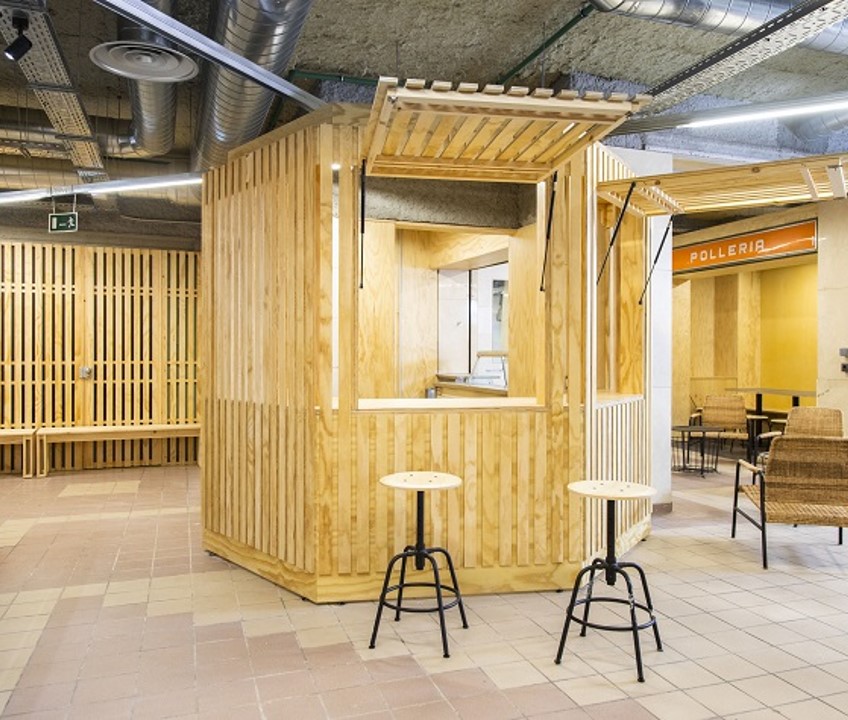
These three presented cases illustrate the values of creativity, diversity and networking, pillars of the New European Bauhaus (NEB) initiative launched by the European Commission. Jimmy Jamar, Head of Europa Nostra Brussels Office also recalled the significance of industrial heritage as a vital part of European shared history and memory.
“The presented good practices are also an important contribution to wellbeing and inclusion for individuals and communities. What brings us together as Europeans? It is our culture, common heritage, common memory, and common history which also require sharing spaces where we can learn from each other.’’ Jimmy Jamar
About the “Sharing Stories” webinar Series
This episode was hosted on 4 April 2022 by Europa Nostra, Architects’ Council of Europe and Eurocities, on behalf of the Cultural Heritage in Action consortium. The webinar brought together more than 120 participants from all around Europe and offered a platform to exchange views, and good practices and tackle the main challenges related to adaptive reuse of (industrial) cultural heritage.
The Sharing Stories” webinar series showcases leading cultural heritage initiatives that are driving sustainable urban and regional development in European cities and regions. Each episode will clearly demonstrate the opportunities for cities and regions in contributing to innovative, impactful, and sustainable cultural, environmental, social, and economic territorial processes.
A third episode took place on 3 May on Cultural tourism in post-covid cities – more information here. Stay tuned for more episodes in the planning! https://culturalheritageinaction.eu/our-events/
